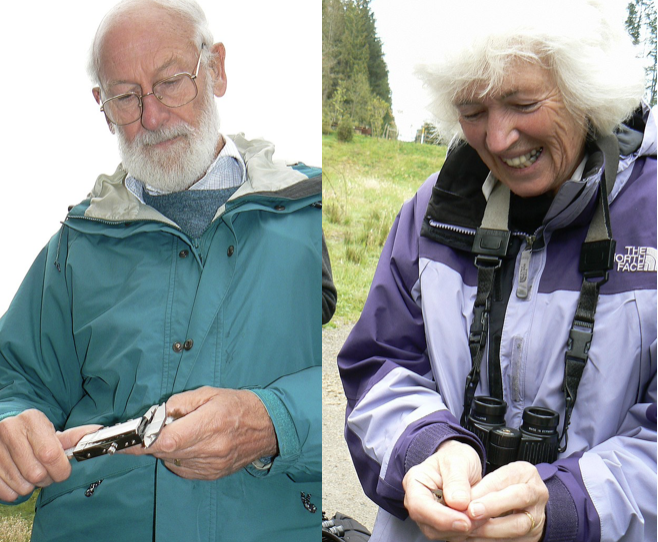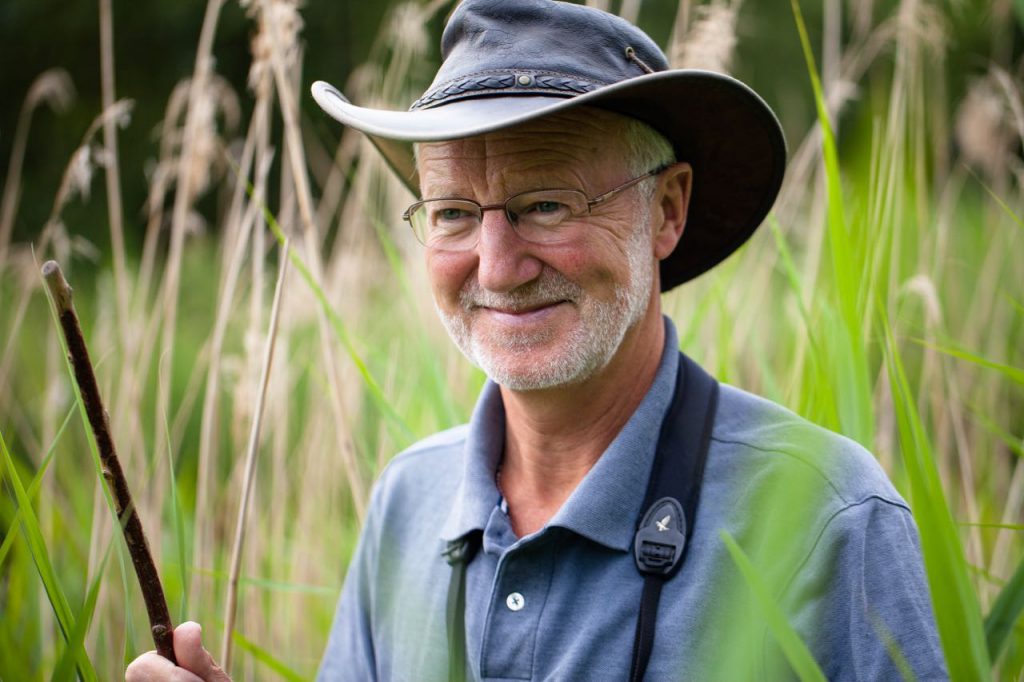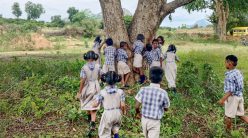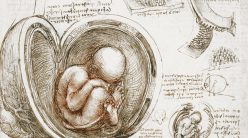When we read research papers, there’s much that we do not know about the studies and their authors. An ecologist sets out to fill the gaps

about the backstory to well-known scientific papers authored by them (Photo courtesy: Hari Sridhar)
In 2016, I began a series of interviews with scientists about the backstory of papers they had written. Scientific papers often present a cleaned up version of science even though the actual process is often messy, and through my interviews I wanted to know more about the not-so-neat bits. I wasn’t sure what people would make of my idea, so I started by approaching a biologist called Mandyam V Srinivasan, who studies bee vision in Australia – it seemed less intimidating to do so because he is related to me! And soon after, I interviewed the US-based ecologist Shahid Naeem. They were both generous with their time and encouraging of my plans, and that’s where the series began: since then, I’ve worked on around 140 such interviews, 70 of which are published on my blog, Reflections on Papers Past.
But the idea of doing these interviews formed some years earlier in 2009, when IISc’s Centre for Ecological Sciences (CES) was celebrating its silver jubilee and I was asked to give a talk at a symposium that it was organising. I had just started fieldwork for my PhD at CES, and it just so happened that around the time, I was chatting with Vidyadhar Atkore, a friend and former classmate of mine who pointed out that everyone gives talks about their research, but what they don’t talk about so much is what they actually did – even if it was unintended, or didn’t initially work, or had to be discarded. He felt knowing something like that would be really useful for people coming into the field, especially students who might be doing research for the first time. So I thought maybe it would be interesting to talk about one of the papers that I had written during my PhD. By the time of the jubilee, I no longer stood by some of the things that I had said in that paper – if I had written the paper at that later point, I would perhaps have said things differently and interpreted some of the data differently. And that got me thinking more about how we tend to do science, and the importance of peeling back that process.
In 2013 I had the opportunity to go to a place called the Institute for Advanced Study in Berlin. It lets you pursue crazy ideas, and in my application I said that I wanted to treat published papers as if they were manuscripts that had just come in. If I had to write a review of one of them, what would that look like? Within the institute was the College for Life Science, where there were others like me, and while I was chatting about my work with an evolutionary ecologist called Seth Barribeau, he made a valuable suggestion: if I wanted to reach a wider audience, why not pick papers that people knew really well, and do the same kind of exercise with them – ask the authors about their backstory?
It is only when you write your first paper that you realise you go through all kinds of problems and failures, and stumble upon so many chance events
Before I came into research and wrote my first paper, I found reading papers somewhat intimidating: I always felt like there was no way I’d be able to do this kind of work. Everything seemed so well thought-out, like it was done by really smart people who knew exactly what they were doing, and who had very clear results. It is only when you write your first paper that you realise you go through all kinds of problems and failures, and stumble upon so many chance events, but present all of this in a paper where it sounds like everything was in place right from the beginning. Picking really well-known papers by well-known authors to revisit humanises them, in a way. These papers have become monuments in the field, and part of my motivation for doing this project is to say that they are people just like us, and there is so much luck and chance and so many human aspects to these papers.
What I ask about
The idea is to pick what one might call ‘classic’ papers in ecology and evolution, and so I look for papers that have been really well cited, used as examples of concepts or ideas in textbooks, or have been recognised in some way (for example, if the author won an award for it). So I started with papers in sub-disciplines of ecology that I was familiar with, but I’ve since tried to pick ones from other sub-disciplines as well.
In my interviews, I am not interested in trying to challenge the validity of the papers; I am more absorbed by how the authors feel about their papers. I have a standard set of questions that I usually ask. Broadly, they are divided into three kinds: one is about the backstory – how the study and the paper came about. I usually ask things like where the idea came from, how the authors came together, what the fieldwork was like, how they chose the journal, what contribution the people mentioned in the ‘Acknowledgements’ section made, and so on. The second set deals with what impact the paper had on the author’s career, how it influenced their research after that, and what the impact of their paper was on the field itself. The third set is to get the author to reflect on what was said in the paper from a contemporary perspective. I pick certain sections in the paper and I ask the authors, “You said this then, what do you think about this now, 30 years later?”

An interview with them revealed that their daughter had helped
complete the fieldwork for a study when Peter had to undergo
treatment for cancer. (Photos courtesy: David Craig, Creative Commons License CC BY-SA 2.0)
In the early interviews, sometimes I was so focused on getting answers to my set list of questions that I wasn’t paying enough attention to what people were actually saying, and so I wasn’t able to ask the right follow-up questions. But the more I did it, I realised it was more important to listen carefully and let some of my questions be open-ended.
What I learned
I was really surprised to get so many positive responses, and that so many people were willing to do the interviews in the first place. And I learned a lot about the process of science from these interviews.
When I went into the interviews, I often didn’t realise that the authors had written these well-known papers at such varied stages in their careers. One such paper came out of someone’s Master’s thesis, a large number were written during their PhDs, and some were written while they were postdocs. So I realised that you don’t have to be an established professor in order to write a paper with impact.
I realised that you don’t have to be an established professor in order to write a paper with impact
One thing I am really struck by is how so many of the collaborations between foreign scientists that led to these papers were not planned at all. Many of them happen by chance, largely as a result of people meeting at conferences and agreeing to work together. And from this I’ve learned the importance of having access to a wide network of people in your field – something we don’t have as much in India. Funding to attend conferences is also hard to come by, whether they’re in India or abroad. Being able to meet and interact with people from different labs doing really good work, and getting to know them personally, would open up so many more opportunities for collaboration.
To me, one of the most important questions that I ask – with some of the richest answers – is about people who are acknowledged for their contribution. It really gives you a sense of how important other people have been to this work: some of them have made really crucial contributions, even if they are minor. When interviewing evolutionary biologists Peter and Rosemary Grant about their paper on character displacement in Galapagos finches, for example, I asked them about the people they acknowledged, one of whom was “KT Grant”. That person turned out to be their daughter Thalia, who had been helping them with fieldwork since she was six years old, and who had completed an important part of the fieldwork for this particular study when her parents were unable to travel because one of them was being treated for cancer.
Another thing I’ve noticed is that many of the papers that I covered had a single author, and were written during that person’s PhD. When I’ve asked how come their supervisors weren’t listed as co-authors, all of them said that at the time, their supervisors felt that unless they were involved in all aspects of the work, they should not be authors on the paper. Now it’s become very rare to find that PhD students produce single-author studies, not just in India but across the board. And in general, statistics show that the average number of authors has increased quite a bit – from close to one in 1956 to between three and four in the journal Ecology.

spoke about the research he did for an old study on butterflies – the likes
of which are now rare because of the amount of natural history involved (Photo courtesy: Ucraraa, Creative Commons License, CC BY-SA 4.0)
There have been a few interviews that I enjoyed doing in particular. One was with Nicholas (Nick) Davies, who works at the University of Cambridge and is well-known in the field of behavioural ecology (best known for his work on brood parasitism in cuckoos). I interviewed him about a paper about butterflies that he did soon after his PhD. It was a great interview because he is such a nice person to talk to, he was very generous with his time and has an engaging way of saying things. But it was also because even though the study was a simple one, it’s very rare to find one like that today – it involved a lot of natural history work. He described how on one day he just sat in a tree all day long to watch butterflies patrolling in the woods. In terms of what he found and what he said in that paper, he was also very willing to acknowledge that some of those things probably won’t hold today. Paul Dayton, a well-known marine ecologist at the Scripps Institute of Oceanography, was also a delight to interview. Even though it was an email interview, he really took the time to send me detailed and interesting responses. He continued writing to me even afterwards with suggestions for other people I can interview, and he’s put me in touch with other potential interviewees as well as people who might support the project.
Archiving the scientific process
What is it that gets cleaned up in a paper, that you don’t usually get to see? You may leave out results that are superfluous or do not seem to present straightforward answers at the moment. Sometimes what you come up with is not what you originally mentioned in your proposal. You also may not present things in the sequence in which you actually did them, and chance discoveries are presented as though they were planned all along. This is not entirely a criticism of the way papers are – of course the cleaning up has a function: you want people to be able to quickly evaluate whether your findings and interpretations are valid. For a reader who wants just that from the paper, the format is fine. But as a document that archives the scientific process, it presents a distorted version of how science works. You may present theoretical motivations for why your work is important. But that isn’t necessarily the motivation for why you did that work.
Now, with journals going online, I think there is really an opportunity for this to change – for journals to allow people to present these stories of how they actually did their research and why they did it, along with their papers. For now, I’ve been putting up all material from the interviews I did on my blog. Another way I’d like to put out this material is to take the original papers and annotate them with material from the interviews. Perhaps it’s far-fetched to think that journals would actually be willing to do this, but I would like to do this with some papers, at least as a prototype.
I must sheepishly admit that I don’t think the way I write papers myself has altered much (also because I’ve only published one paper since my project began), though one thing I have started doing is to maintain a more careful record of what I am doing in my research, like keeping a journal. I think it’s been very useful, and I wish I had done it right from the beginning. Maintaining a daily log helps track things like exactly when an idea came up and changed the direction of your plans, and for my last paper I tried to document that more diligently.
These days, I am more interested in learning about scientists than I am about doing science – I think there’s very little work that tries to understand and document the nature of scientific activity, and the process of science itself. In the near future, these are the questions that I would like to pursue: how does science inform and interact with conservation in India? What kinds of science are useful in conservation? What are the motivations of conservation biologists to do what they do? And more generally, what is it like, on a daily basis, to do science? That’s what I’d like to find out.
As told to Deepika S
Hari Sridhar is a post-doctoral researcher at IISc’s CES, and his primary research interest is social behaviour among members of different species. In addition to research, he teaches community ecology and ornithology at different institutes, helps edit a magazine called Current Conservation, and conducts interviews on topics related to the making of science.




